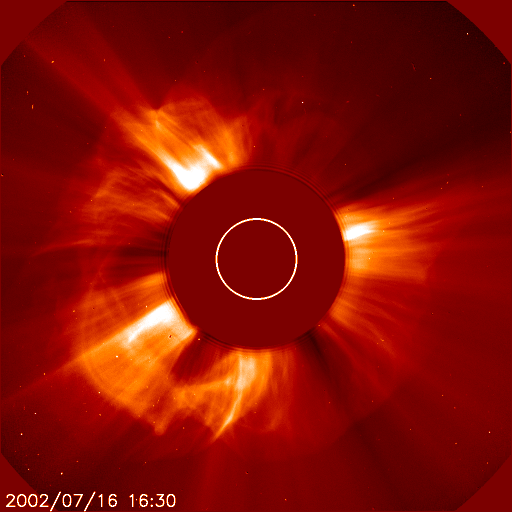
Above is a picture from the LASCO C2 coronagraph showing a full halo coronal mass ejection (CME) surrounding the solar disk. This CME left the Sun on July 16 around 16UT. Its origin and direction were puzzling. It was not certain whether the CME was directed straight towards Earth or was directed away from us.
The CME was so fast (about 1100km/s) that it could have escaped without leaving a sign of any disturbance on the SoHO EIT images (FeXII 19.5 nm). One possible source was the Catania sunspot group 016 (NOAA 10030), a very complex and extended sunspot group North in the middle of the disk. To comfort the idea that this CME was front-sided were the LASCO images, hit by cosmic rays a few hours later. The >10Mev proton flux component exceeded the event threshold around 18UT on July 16. This could be an illustration of a proton event driven by the CME interplanetary shock wave.
Interestingly, the event was not associated with any disappearing filament, nor flare, nor even a radio burst. Moreover, on the far-side of the Sun, a southern sunspot group likely to be the ex Catania group 095 (NOAA 10019) seemed also to be a possible source for the CME. Archimedean magnetic field lines connecting this region to the Earth were likely followed by the protons.





